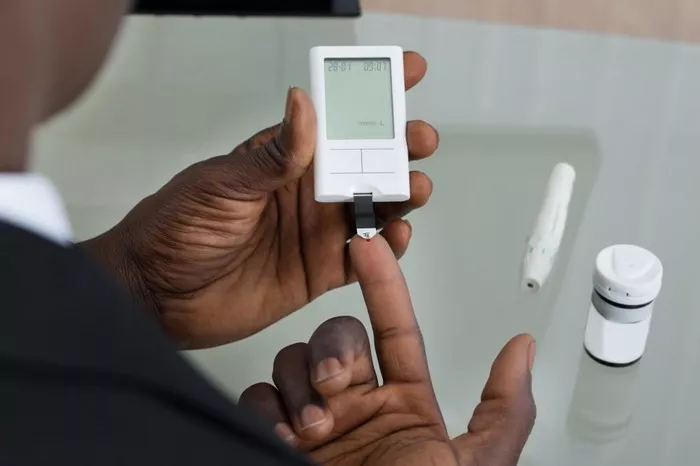Blood glucose monitoring is a vital aspect of managing diabetes and ensuring optimal health. One of the key tests that healthcare providers use to assess glucose metabolism is the 3-hour glucose tolerance test. This test helps determine how well the body processes sugar and can provide insights into an individual’s risk of developing diabetes or other glucose-related disorders. This article explores what 3-hour glucose results should be, the significance of these results, and factors affecting glucose levels.
Understanding the 3-Hour Glucose Tolerance Test
The 3-hour glucose tolerance test is a diagnostic tool primarily used to evaluate how well the body manages glucose. It is often administered when there are concerns about insulin resistance, gestational diabetes, or other metabolic disorders.
Procedure of the 3-Hour Glucose Tolerance Test
Preparation: Patients are usually instructed to fast for at least 8 hours before the test. This means no food or drink except for water during this fasting period.
Initial Blood Sample: Upon arrival at the testing facility, a baseline blood sample is drawn to measure fasting blood glucose levels.
Glucose Administration: After the initial blood draw, the patient consumes a glucose solution that typically contains 75 grams of glucose.
Subsequent Blood Draws: Blood samples are taken at regular intervals after glucose consumption. For a 3-hour test, samples are typically drawn at 1 hour, 2 hours, and 3 hours after ingestion.
Normal and Abnormal Glucose Levels
The results of the 3-hour glucose tolerance test help classify an individual’s glucose metabolism:
Normal Glucose Tolerance:
Fasting: Less than 100 mg/dL (5.6 mmol/L)
1 Hour: Less than 180 mg/dL (10.0 mmol/L)
2 Hours: Less than 155 mg/dL (8.6 mmol/L)
3 Hours: Less than 140 mg/dL (7.8 mmol/L)
Impaired Glucose Tolerance (prediabetes):
Fasting: 100 to 125 mg/dL (5.6 to 6.9 mmol/L)
1 Hour: 180 to 199 mg/dL (10.0 to 11.0 mmol/L)
2 Hours: 155 to 199 mg/dL (8.6 to 11.0 mmol/L)
3 Hours: 140 to 199 mg/dL (7.8 to 11.0 mmol/L)
Diabetes:
Fasting: 126 mg/dL (7.0 mmol/L) or higher
1 Hour: 200 mg/dL (11.1 mmol/L) or higher
2 Hours: 200 mg/dL (11.1 mmol/L) or higher
3 Hours: 200 mg/dL (11.1 mmol/L) or higher
What Should 3-Hour Glucose Results Be?
The third hour of the glucose tolerance test is particularly crucial for understanding an individual’s glucose metabolism. A normal glucose level at this point should be below 140 mg/dL (7.8 mmol/L). Higher levels may indicate that the body is not effectively processing glucose.
Interpreting 3-Hour Glucose Results
Below 140 mg/dL (7.8 mmol/L): Indicates normal glucose metabolism. The body has effectively cleared the glucose from the bloodstream.
140 to 199 mg/dL (7.8 to 11.0 mmol/L): Suggests impaired glucose tolerance. This range is often a warning sign that the individual is at risk of developing Type 2 diabetes.
200 mg/dL (11.1 mmol/L) or higher: Indicates diabetes. This result suggests that the body’s insulin response is inadequate, leading to persistently high blood sugar levels.
Why Is the 3-Hour Glucose Result Important?
The 3-hour glucose result is significant for several reasons:
Early Detection: Identifying impaired glucose tolerance or diabetes early can facilitate timely interventions, potentially preventing the progression to Type 2 diabetes.
Monitoring Treatment Efficacy: For individuals diagnosed with diabetes, this test can help evaluate the effectiveness of their treatment plan and guide necessary adjustments.
Guiding Lifestyle Changes: Results may prompt healthcare providers to recommend lifestyle changes, including diet modifications and increased physical activity.
Factors Affecting 3-Hour Glucose Results
Several factors can influence blood glucose levels during the glucose tolerance test. Understanding these factors can help interpret results more accurately.
1. Diet Before the Test
What a person eats in the days leading up to the test can impact results. A diet high in carbohydrates or sugar can lead to higher baseline glucose levels.
2. Medications
Certain medications can affect glucose metabolism. For instance:
Corticosteroids: Can raise blood glucose levels.
Diuretics: May lead to elevated glucose levels in some individuals.
Antidepressants: Some can affect glucose metabolism, potentially leading to higher levels.
3. Physical Activity
Regular exercise helps regulate blood sugar levels. Lack of physical activity before the test can result in higher glucose levels, while excessive exercise immediately prior to testing may temporarily lower glucose levels.
4. Stress
Stress can significantly impact blood glucose levels due to the release of stress hormones like cortisol, which can increase blood sugar levels.
5. Illness
Infections or illnesses can also influence glucose metabolism. During illness, the body may require more insulin, leading to higher blood sugar levels.
6. Hormonal Changes
Hormonal fluctuations, particularly in women, can affect glucose levels. For example, hormonal changes during the menstrual cycle can influence insulin sensitivity.
7. Sleep Patterns
Poor sleep quality or sleep disorders can lead to insulin resistance, affecting glucose levels during the test.
When to Consider a 3-Hour Glucose Test
The 3-hour glucose tolerance test is typically recommended in specific situations:
1. Risk of Gestational Diabetes
Pregnant women, especially those with risk factors for gestational diabetes (e.g., obesity, family history of diabetes), may undergo this test to assess their glucose metabolism during pregnancy.
2. Suspected Diabetes
Individuals exhibiting symptoms of diabetes—such as increased thirst, frequent urination, fatigue, and blurred vision—may be advised to take this test.
3. Monitoring High-Risk Individuals
People with a family history of diabetes, hypertension, or hyperlipidemia may be monitored regularly with the glucose tolerance test to identify any early signs of glucose intolerance.
4. Evaluating Insulin Resistance
The test can help assess insulin resistance in individuals with metabolic syndrome or other related conditions.
Managing Elevated 3-Hour Glucose Results
If the 3-hour glucose results indicate impaired glucose tolerance or diabetes, several management strategies can be implemented.
1. Lifestyle Modifications
Dietary Changes: Adopting a balanced diet that emphasizes whole foods, such as fruits, vegetables, whole grains, lean proteins, and healthy fats. Reducing intake of refined carbohydrates and sugary foods is essential.
Regular Physical Activity: Engaging in at least 150 minutes of moderate aerobic exercise each week can help improve insulin sensitivity and lower blood sugar levels.
Weight Management: Maintaining a healthy weight or achieving weight loss can significantly impact blood glucose levels and overall health.
2. Medical Management
Oral Medications: For those diagnosed with Type 2 diabetes or prediabetes, healthcare providers may prescribe medications to help lower blood glucose levels.
Insulin Therapy: Individuals with Type 1 diabetes or those with advanced Type 2 diabetes may require insulin therapy to manage their blood sugar levels effectively.
3. Regular Monitoring
Frequent Blood Glucose Testing: Regular self-monitoring of blood glucose levels can provide valuable information about how well management strategies are working.
A1C Testing: Regular A1C tests can help assess long-term blood glucose control and guide treatment decisions.
4. Education and Support
Diabetes Education Programs: Participating in educational programs can provide individuals with the knowledge and skills necessary to manage their condition effectively.
Support Groups: Connecting with others living with diabetes can provide emotional support and practical tips for managing the condition.
Conclusion
Understanding what constitutes normal, impaired, and elevated 3-hour glucose results is critical for early detection and management of diabetes and glucose intolerance. A normal glucose level at the third hour should be below 140 mg/dL (7.8 mmol/L). Levels between 140 and 199 mg/dL (7.8 to 11.0 mmol/L) indicate impaired glucose tolerance, while levels of 200 mg/dL (11.1 mmol/L) or higher signal diabetes.
Several factors, including diet, medications, physical activity, stress, illness, hormonal changes, and sleep patterns, can influence these results. Individuals at risk for diabetes should discuss the necessity of a 3-hour glucose tolerance test with their healthcare provider. Effective management strategies, including lifestyle modifications and medical interventions, can significantly improve blood glucose levels and overall health outcomes.
By monitoring blood glucose levels regularly and making informed choices about diet and lifestyle, individuals can take control of their health and reduce their risk of complications associated with diabetes and glucose intolerance.
Related topics:



























